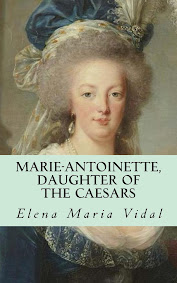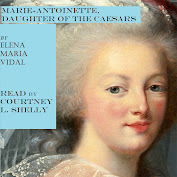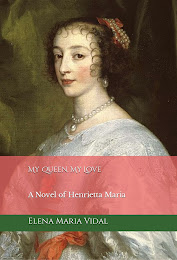ShareIt is here that one of her most violent opponents, Jacques René Hébert, found his preferred mode of attack. It was Hébert who authored the ‘great joys’ and ‘great angers’ of Père Duchesne, a regularly published column which has been credited with as many as one million subscriptions. Describing her as the “monster that Hell vomited onto the Earth”, her execution came as “the greatest of all the joys of Père Duchesne", and he acerbically greets her judgment with the words ‘better late than never.’
Tota pulchra es Maria
4 days ago


















9 comments:
We still believe everything that comes out in print. In this age of technology even photos can be altered.
Well, evidently calumny and detraction were 'en vogue' even then, eh?
Marie is becoming more and more a favorite of mine, thanks to you. Her reputation suffered because of those who had the public's ear (and eyes) and chose to vilify her. Kyrie eleison.
The difference between then and now is that it's much easier to defend yourself against vicious lies and libels now than it was then. People are credulous enough now, but they were much more so then, in a place and time where 95% of the population was illiterate.
We also don't consider the types of "sins" that Marie Antoinette was falsely accused of to be Capital Crimes.
The only thing that amazes me is that any serious historian of modern times attaches any more credence to the nasty pamphlets that circulated then, than they would an anonymous hate blog these days. Most historians long ago cleared Antoinette of all crimes these people imputed to her.
Vile, vicious, hellish fantasy.
Interesting, the way these revolutionary types like nasty animal imagery. I know that Leopold III of Belgium was satirized as a crowned snake and a "Rat King" and his second wife, Princess Lilian, was called "Shrimp Queen" and "Lady Codfish" among other inventive names.
These days Jacques René Hébert - far from ending up at Madame la Guillotine - would probably be running the British Broadcasting Corporation, while editing a Rupert Murdoch tabloid, and simultaneously playing a Wizard-of-Oz role apropos the U.S. "Catholic" Bishops' apparat. His pathological poltroonery, however, would remain unaltered, as would his mania for defaming the innocent with fraudulent charges of child abuse.
Let it be said in (partial) extenuation of the horrifying Robespierre that even he drew the line at accusing Marie Antoinette of making whoopee with the Dauphin. "It's not enough," Robespierre protested, "to have made her a Messalina: that idiot Hébert wants to make her an Agrippina."
And even by the demanding standards of a Hébert, the villainy of fellow enragé Bertrand Barere was still worse. As Lord Macaulay said of Barere:
"That party [the Jacobins] included a considerable number of the worst men that ever lived; but we see in it nothing like Barere. Compared with him, Fouché seems honest; Hébert seems to rise into dignity. ... we cannot with truth deny that he [Robespierre] was, in the vulgar sense of the word, disinterested, that his private life was correct, or that he was sincerely zealous for his own system of politics and morals. He, therefore, naturally finds admirers among honest but moody and bitter democrats. If no class has taken the reputation of Barere under its patronage, the reason is plain: Barere had not a single virtue, nor even the semblance of one."
The whole essay on Barere is worth reading (it starts about two-thirds of the way down this page):
http://worldebooklibrary.org/eBooks/WorldeBookLibrary.com/2mwsm.htm
Hi, I know that this article is from ten years ago and you may not use this blog anymore, but I thought I'd try anyway. I'm writing my senior thesis on Marie-Antoinette, and I'd really like to use this image in my paper. If you read this, do you think you could comment with the source you found it from? That would be incredibly helpful and I would be very grateful.
Thank you.
I think it is from Hébert's Père Duchesne. I will check.
The print is a partial drawing of both the King and the Queen. Here is a link with an explanation: https://www.metmuseum.org/art/collection/search/393244 To quote:
'During the first years of the French Revolution, King Louis XVI was rarely ridiculed in prints. It was only after the night of June 20, 1791 - when he and his family attempted to flee Paris for a Royalist stronghold, where he hoped to begin a counterrevolution - that popular opinion turned more decidedly against him. Louis and Queen Marie-Antoinette then became frequent targets of French caricaturists, who often depicted them in a sort of reverse anthropomorphism, as animals with human heads. Here, the royal couple is portrayed as a two-headed creature that pulls in opposite directions. The king is given the body of a pig and the horns of a cuckold, a reference to his wife's many rumored affairs; the queen, with the body of a hyena, sports a fancy headdress of serpents and ostrich feathers, the latter a pun on her Austrian heritage (autruche and Autriche)'
Thank you so much! That's extremely helpful!
Post a Comment